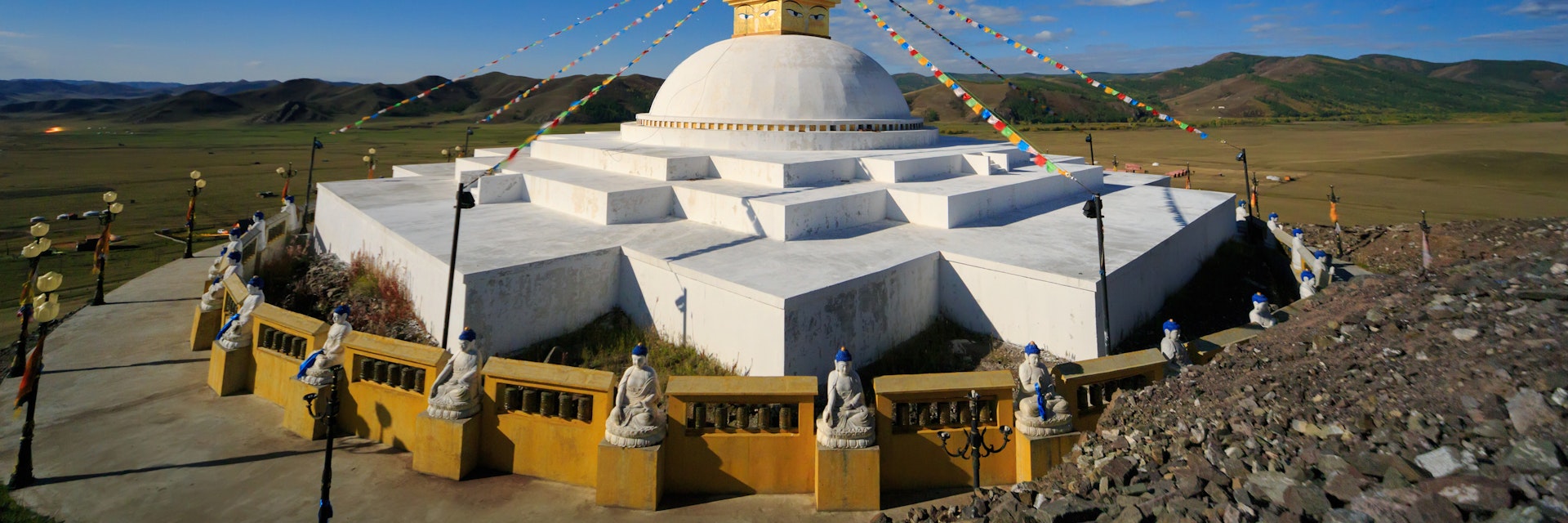Amarbayasgalant Khiid was built between 1727 and 1737 by the Manchu emperor Yongzheng, and dedicated to the great Mongolian Buddhist and sculptor Zanabazar, whose mummified body was moved here in 1779. The design references Manchu style, down to the inscriptions, symmetrical layout, imperial colour scheme and roof guardians on every roof corner.
Despite extensive restoration by Unesco, there's a sense of genteel decay and a gradual takeover by nature that adds to the allure of the place.
From the faded wooden beams thickly coated in bird droppings, and riotous greenery blocking some entrances, to the scurrying marmots and cawing jackdaws that seem to rule the place, the exterior of the complex radiates a lost-in-time sense of magic. The interior of the main temple is far more vigorous; enormous banners painted in riotous colours descend from the high, airy ceiling, while similarly vibrant pillars climb up to it. All throughout, hundreds of Buddhas, bodhisattvas and guardian deities keep watch over visitors and the resident lamas.
The monastery was largely spared during the 1937 purge, possibly because of sympathetic and procrastinating local military commanders. These days, about 30 monks live in the monastery, compared with more than 2000 in 1936.
Most of the temples in the monastery are normally closed, so if you want to see any statues or thangkas (scroll paintings), you’ll have to find the monks with the keys in the monks’ quarters, the yellow concrete buildings on the right side (east) of the monastery. This isn't an uncommon request, so don't feel too awkward about asking. The main gates to the temple are supposed to be open from 10am to 7pm during the summer, although these times seem a little fluid in practice. During winter, you'll usually have to ask at the dorms for the keys.
The richly decorated main temple, Tsogchin Dugan, has a disturbingly lifelike, lifesized statue of Rinpoche Gurdava, a lama from Inner Mongolia who lived in Tibet and Nepal before returning to Mongolia in 1992 and raising much of the money for the temple’s restoration. Photography inside the temple seems to be allowed, but it's disrespectful to turn your back to the deities.
Ceremonies are usually held at 10am, so arrive early or stay overnight to see them.
A couple of newer monuments – a golden Buddha statue and a stupa – are situated on the hills behind the monastery. You could continue hiking up the mountains for even better views of the valley.
